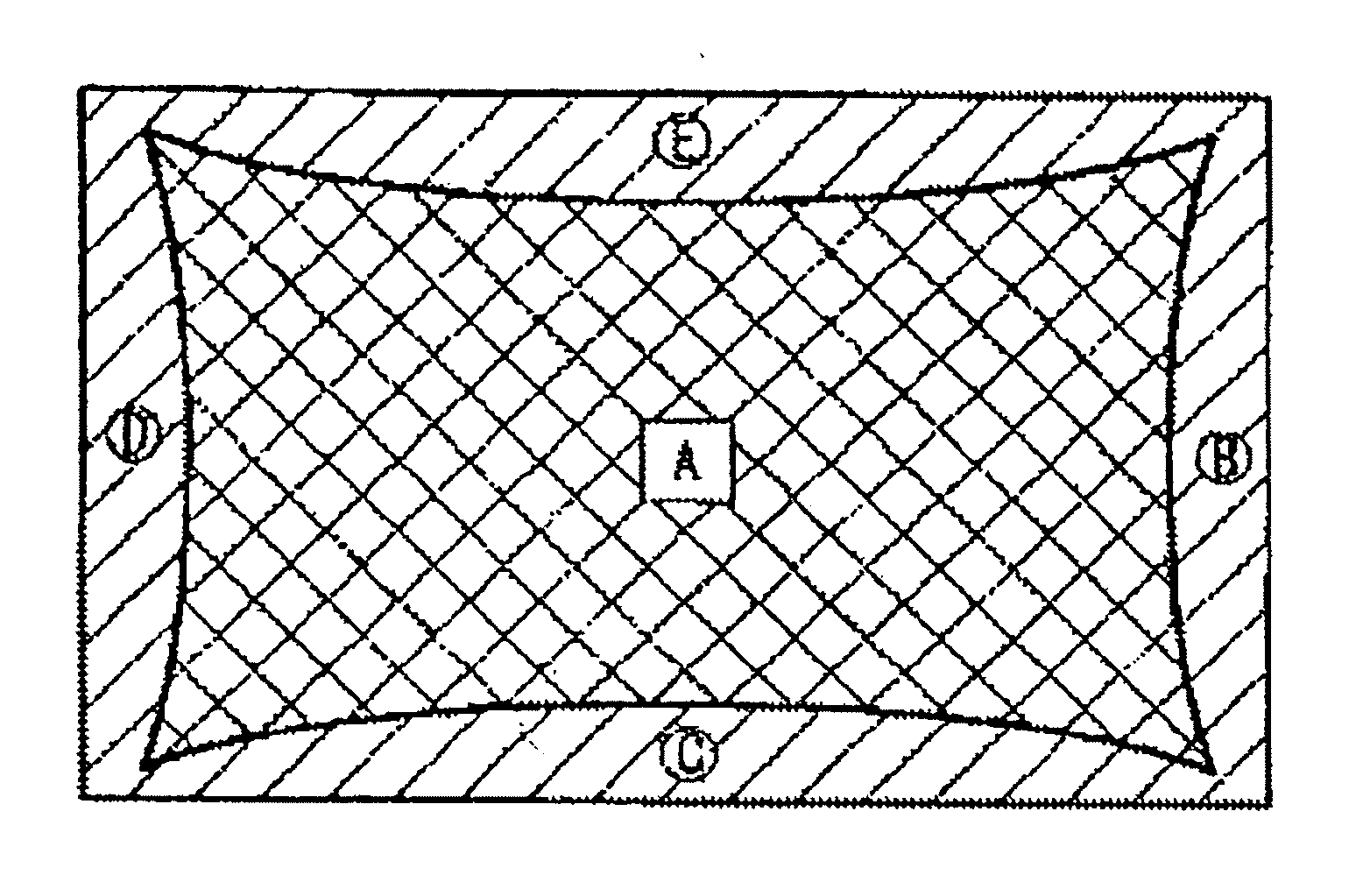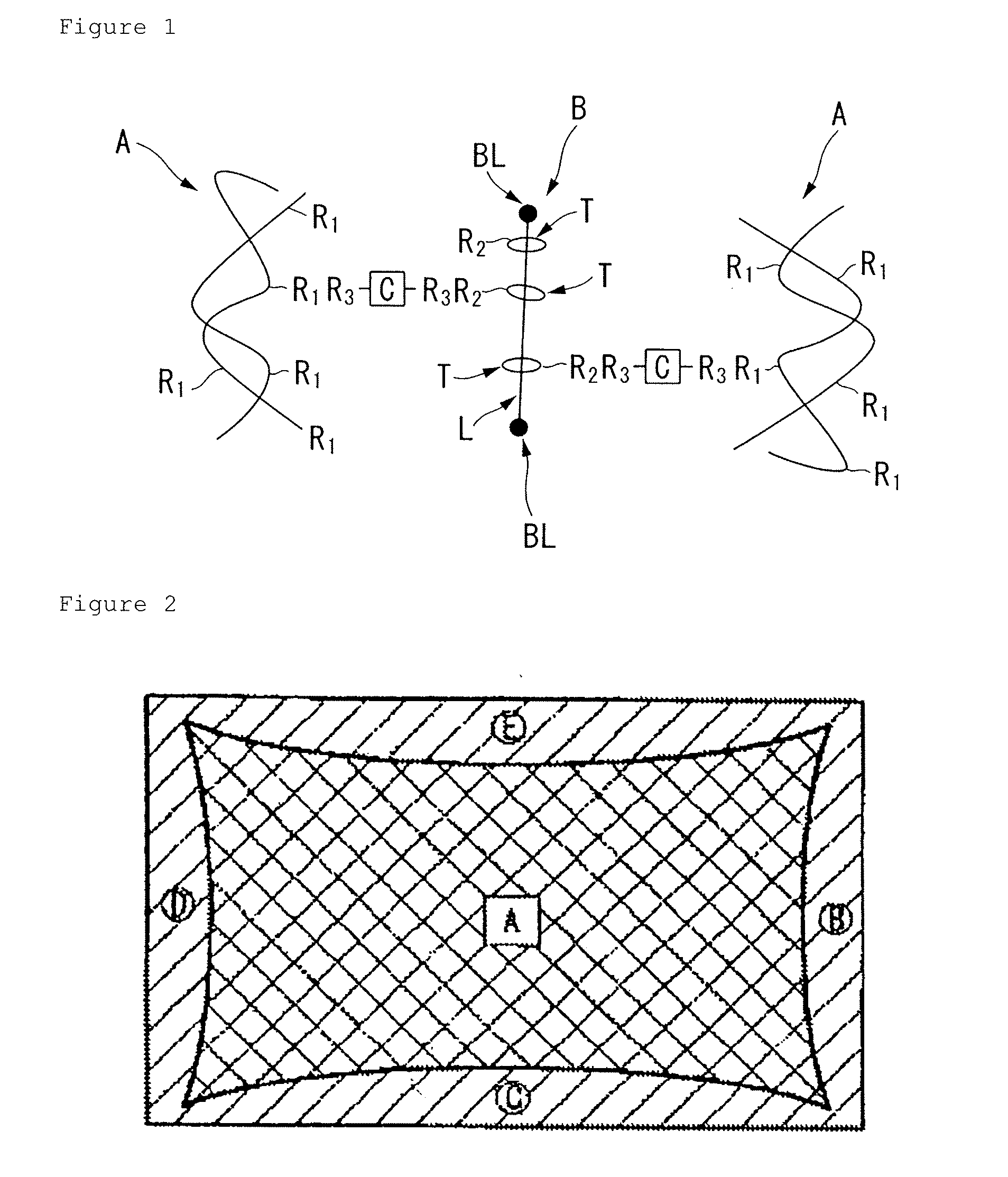Pressure-sensitive adhesive composition and pressure-sensitive adhesive sheet
- Summary
- Abstract
- Description
- Claims
- Application Information
AI Technical Summary
Benefits of technology
Problems solved by technology
Method used
Image
Examples
example 1
[0098]As the polyrotaxane (B), there was prepared a modified polyrotaxane according to the method set forth in Soft Mater., 2008, 4, 245-249, such that the modified polyrotaxane comprised:
[0099]linear-chain molecule L: polyethylene glycol (weight-average molecular weight 35,000);
[0100]cyclic molecules T: ε-caprolactone graft-polymerized to α-cyclodextrin, after introduction of hydroxypropyl groups (hydroxypropyl degree of substitution: 48%, ε-caprolactone polymerization charge amount [ε-caprolactone] / [hydroxyl group]=3.9, inclusion amount of cyclic molecules T: 25%);
[0101]blocking groups BL: adamantane groups.
[0102]The hydroxyl group amount of the obtained polyrotaxane (B) was 1.4 mmol / g.
[0103]Herein, 100 parts by weight of an acrylate copolymer having a weight-average molecular weight of 1,800,000 and comprising 98.5 wt % of butyl acrylate units and 1.5 wt % of 2-hydroxyethyl acrylate units, as the (meth)acrylate copolymer (A); 6 parts by weight of the above polyrotaxane (B); 4 par...
example 2
[0107]A pressure-sensitive adhesive sheet in which a pressure-sensitive adhesive layer was formed on a polarizing plate was produced in the same way as in Example 1, but herein the blending amounts of the crosslinking agent (C) and the polyrotaxane (B) were adjusted in such a manner that the equivalent ratio of the crosslinking agent (C) with respect to the (meth)acrylate copolymer (A) was 0.5.
example 3
[0108]A pressure-sensitive adhesive sheet in which a pressure-sensitive adhesive layer was formed on a polarizing plate was produced in the same way as in Example 1, but herein the blending amounts of the crosslinking agent (C) and the polyrotaxane (B) were adjusted in such a manner that the equivalent ratio of the crosslinking agent (C) with respect to the copolymer (A) was 0.2.
PUM
| Property | Measurement | Unit |
|---|---|---|
| Fraction | aaaaa | aaaaa |
| Temperature | aaaaa | aaaaa |
| Fraction | aaaaa | aaaaa |
Abstract
Description
Claims
Application Information
 Login to View More
Login to View More - R&D
- Intellectual Property
- Life Sciences
- Materials
- Tech Scout
- Unparalleled Data Quality
- Higher Quality Content
- 60% Fewer Hallucinations
Browse by: Latest US Patents, China's latest patents, Technical Efficacy Thesaurus, Application Domain, Technology Topic, Popular Technical Reports.
© 2025 PatSnap. All rights reserved.Legal|Privacy policy|Modern Slavery Act Transparency Statement|Sitemap|About US| Contact US: help@patsnap.com



